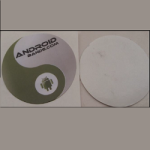Working of AOPL02 NFC Tags
AOPL02 NFC tags are passive devices, which means that they operate without a power supply of their own and are reliant on an active device to come into range before they are activated. The trade-off here is that these devices can’t really do any processing of their own, instead they are simply used to transfer information to an active device, such as smartphone.
In order to power these NFC tags, electromagnetic induction is used to create a current in the passive device. We won’t get too technical on this, but the basic principle is that coils of wire can be used to produce electromagnetic waves, which can then be picked up and turned back into current by another coil of wire. This is very similar to the techniques used for wireless charging technologies.
Features of AOPL02 NFC Tags:
- ISO/IEC 14443A.
- Operating Frequencies 13.56MHz.
- 512 bit user memory.
- Chip: NXP Ultralight MFO.
- Data Transfer Rate: 106Kbits/s.
RF Features
- Operating Frequency: 13.56MHz.
- Mode of Operation: Passive.
Electrical Characteristics
- Protocol: ISO/IEC 14443A.
- User Memory: 512 bit.
Inlay Material
- Antenna: Al, 30μm+/- 3μm.
- HF IC: Silicon, 150μm+/- 10μm.
- Substrate: PET, 38μm +/- 5μm.
ESD & Inlay Handling
- Human Body Mode: 1.5KV.
- Charged device Mode: 1.5KV.
Electrical Characteristics
- Protocol: ISO/IEC 14443A.
- User Memory: 512 bit.
Environmental Specifications
- Shelf Life: 5 years.
- Recommended Storage Condition: -25℃ to +50℃, 20% to 90%RH.
- Operating Temp.: -40℃ to +65℃.
Label Specifications
- Label Size: Outside diameter 50mm








